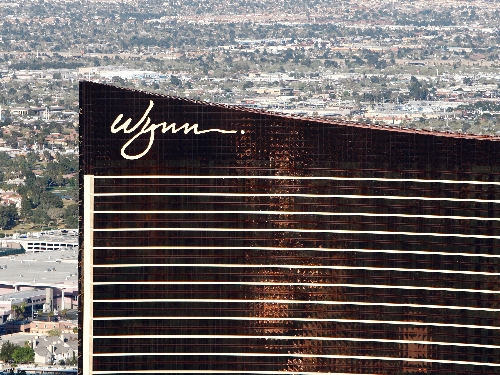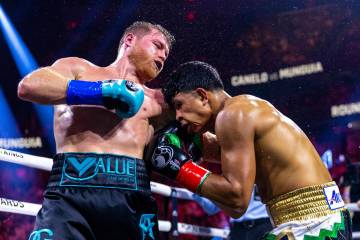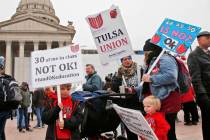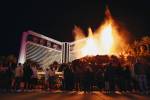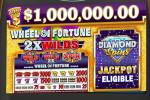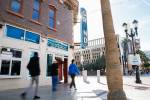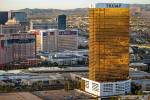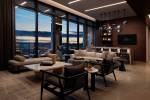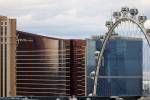Las Vegas culture forever changed by Steve Wynn’s influence
Everyone knows his name; it's written all over town.
Few people in Las Vegas -- or around the world -- can argue that Steve Wynn has been an influential part of making Sin City what it is today. It's not hard to find Wynn's name on casinos and even street signs throughout the city.
Nestled between West Tropicana and West Hacienda a venues, Wynn Road sits as a tribute to it s namesake.
"He (Wynn) definitely changed the game for Las Vegas," University of Nevada, Las Vegas history p rofessor Eugene Moehring said. "What he brought to Las Vegas was this high-end feeling of elegance and the expectation of that. All of a sudden, we were a city, not just of vice but of aesthetic pleasures as well."
Wynn was born in 1942 in New York and made his first trip to Las Vegas at age 10 with his father, who eventually opened a bingo parlor that was forced to close because of a lack of licensing.
Wynn went on to attend the University of Pennsylvania's Wharton School of business . In his spare time, he threw himself into learning the bingo business.
Wynn married Elaine Paschal, a woman he'd met through an acquaintance of his father's, in 1963.
In 1967, the Wynn s made the move to Las Vegas.
According to the book "The First 100 Persons Who Shaped Nevada," edited by A.D. Hopkins, Wynn almost immediately invested in the Frontier Hotel, a deal Hopkins describes as " perhaps the most controversial deal he would ever make."
Hopkins said Wynn was never accused of shady practices, but it was well known that a number of Wynn's business associates were mob-connected.
"Wynn had been there less than a year when image-sensitive state authorities persuaded billionaire Howard Hughes to buy the Frontier, hoping his corporate security people could clean up the problems," Hopkins said.
It was during his time at the Frontier that Wynn met Las Vegas banker E. Parry Thomas, who became his mentor.
In 1971, Wynn learned that Caesars Palace, at the corner of Las Vegas Boulevard and Flamingo Road, didn't own a narrow strip of land on the corner along Flamingo. Hughes did and refused to sell it.
Wynn, with the help of Thomas (who knew Hughes' real estate holdings well because he helped assemble them) located another parcel Hughes wanted and made a trade.
According to Hopkins, Wynn announced plans to build the world's narrowest casino on the land, forcing the hotel to buy it for $2.25 million.
"This gave him enough money to participate with Thomas in the most famous bloodless coup in Las Vegas casino management," Hopkins said.
The Golden Nugget had one of the most desirable locations on Fremont Street, and Wynn wanted in on it.
He and a group of new investors bought enough of the property's ailing stock to get elected to the board of directors. They then documented mismanagement, which led to a phone call threatening to sue President Buck Blaine if he didn't resign.
By August 1973, Wynn ran the company, and in one year, he increased the pre-tax profits from $1.1 million to $4.2 million, according to Hopkins.
In 1977, Wynn added 579 rooms, and the Nugget was soon making $12 million a year.
Hopkins said Wynn used Golden Nugget profits to buy an aging hotel in Atlantic City, N.J., where, in 1980, he built another Golden Nugget with 506 rooms.
By 1984, Wynn's net worth was estimated at $100 million.
Hopkins added that by 1986, Wynn had bought a large tract on the Strip at its intersection with Spring Mountain Road across from the Desert Inn.
"Wynn then sold the Nugget's Atlantic City property for $440 million, plowing part of the money into upgrading the Golden Nugget downtown and part into a new resort at the Strip location," Hopkins said. "The published price tag of the new Mirage was $630 million, and $565 million of that was raised by the sale of junk bonds -- bonds rated risky by investment analysts and, therefore, paying a high interest rate. It was an enormous gamble; the new hotel would have to make $1 million a day to service the debt. While it had 3,000 rooms to do it, nobody really knew if there was enough business to fill that many new rooms -- particularly rooms that had to rent for more than the city average to pay the nut."
It was a grand venture to be sure, and nobody had built a new hotel on the Strip since 1973.
Hopkins said that before opening The Mirage in November 1989, the industry began following Wynn's lead.
"Caesars Palace cut a deal to construct the Forum Shops, a mall of quality stores unprecedented in Las Vegas, linking its own resort with The Mirage," he said. "Caesars also enlarged its casino to accommodate the new business it expected to stroll in from shops or The Mirage. Circus Circus started building a new resort, the 4,000-room Excalibur."
MGM Grand started another new MGM Grand with 5,000 rooms.
These four projects changed the perception of Las Vegas from one of debauchery and excess to excessive elegance.
On the same parcel of property, Wynn later constructed Treasure Island.
In 1998, the 3,000-room Bellagio opened. Wynn Las Vegas followed in 2005 and then, in 2008, Encore.
"There's no doubt Las Vegas has become what it is in part because of Steve Wynn," Moehring said.
Contact Southwest and Spring Valley View reporter Amanda Donnelly at adonnelly@viewnews.com or 380-4535.
Naming Las Vegas
The history behind the naming of various streets, parks, schools, public facilities and other landmarks in the Las Vegas Valley will continue to be explored in a series of feature stories appearing in View editions published on the first Tuesday of every month.
If you're curious about how or why something got its name, post a comment on our Facebook page, facebook.com/viewnewspapers, or email sblust@viewnews.com.
Thanks for reading View.



